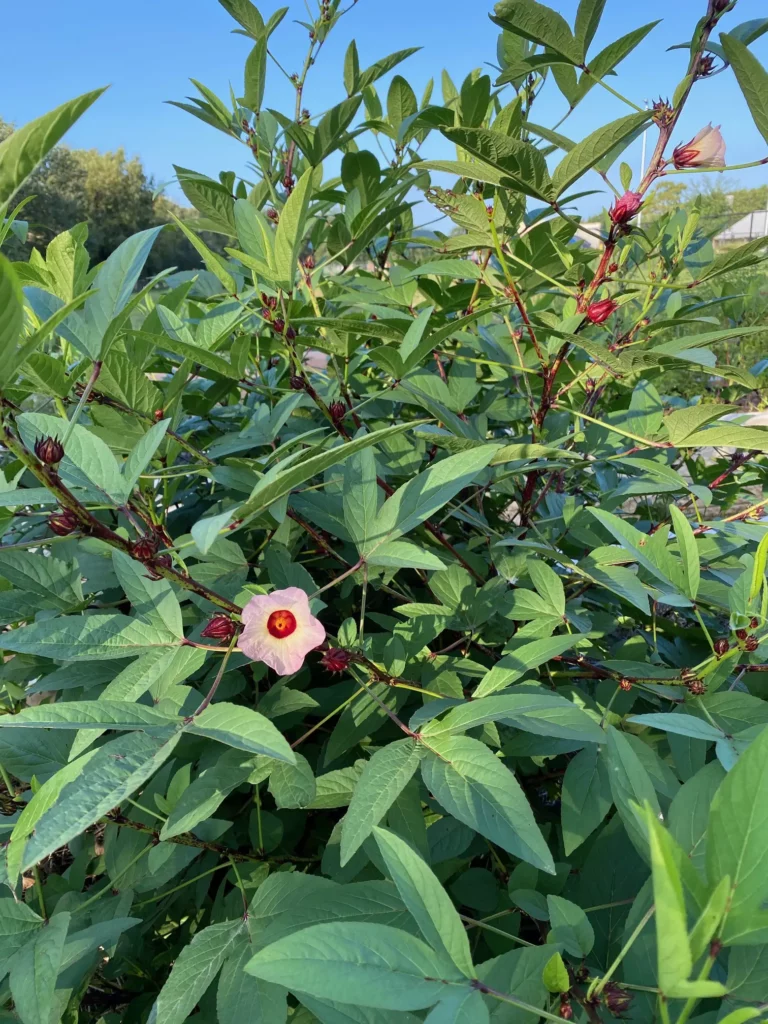
Jamaica, Roselle, or Hibiscus are names associated with this plant from tropical climates. Growing Jamaica is simple, but it requires time and space.
In general, it is preferable to buy the plants. For a family, one plant is more than enough. And growing from seed is slow and not worth it. Here in Houston, they sell plants ready to plant from March to June.
Initially, the plant grows and grows and only begins to flower once the days get shorter, at the end of August. To cultivate Roselle, you need soil with good drainage, and plenty of sun is required. It is resistant to dry periods.
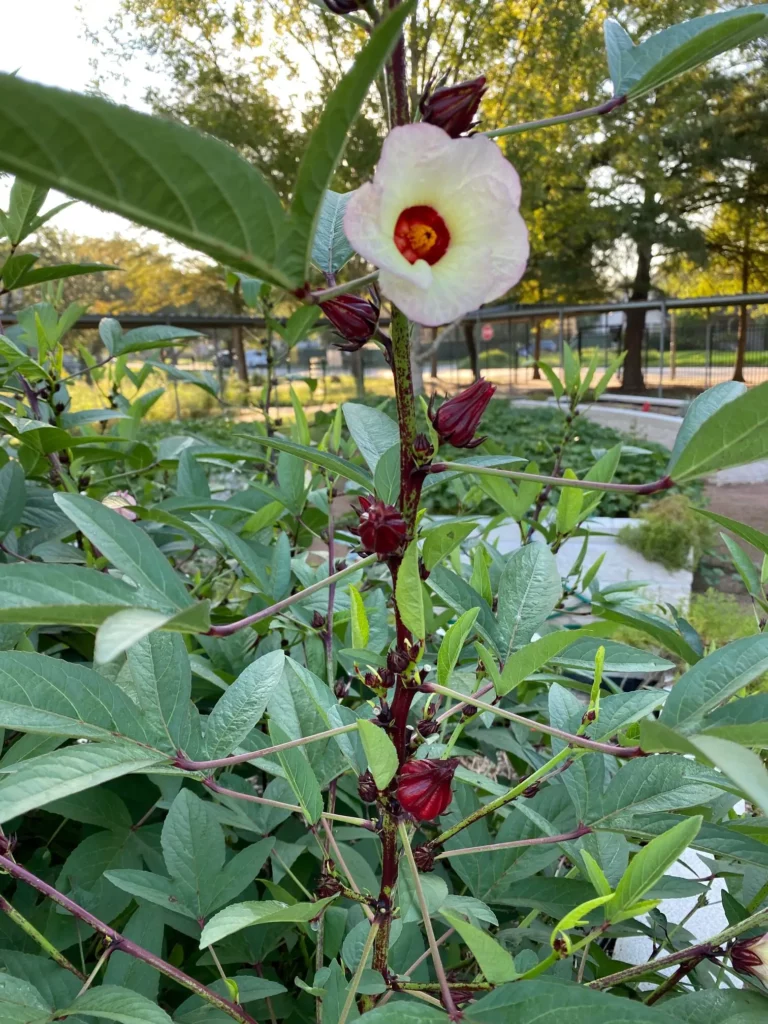
Once established, water once a week, deep watering. It is a very generous plant from the moment it begins to flower until the first frost. Harvest the fruit a couple of days after the flower has opened and fallen. Harvest from the base of the plant up the stems. After the first flowering, it blooms again and forms new fruits on the same branches.
Growing Hibiscus Roselle is very rewarding. Discard the solid center seeds from each fruit, collect the calyxes (purple covering), and dry them. It can be in the sun or electric dehydrators.
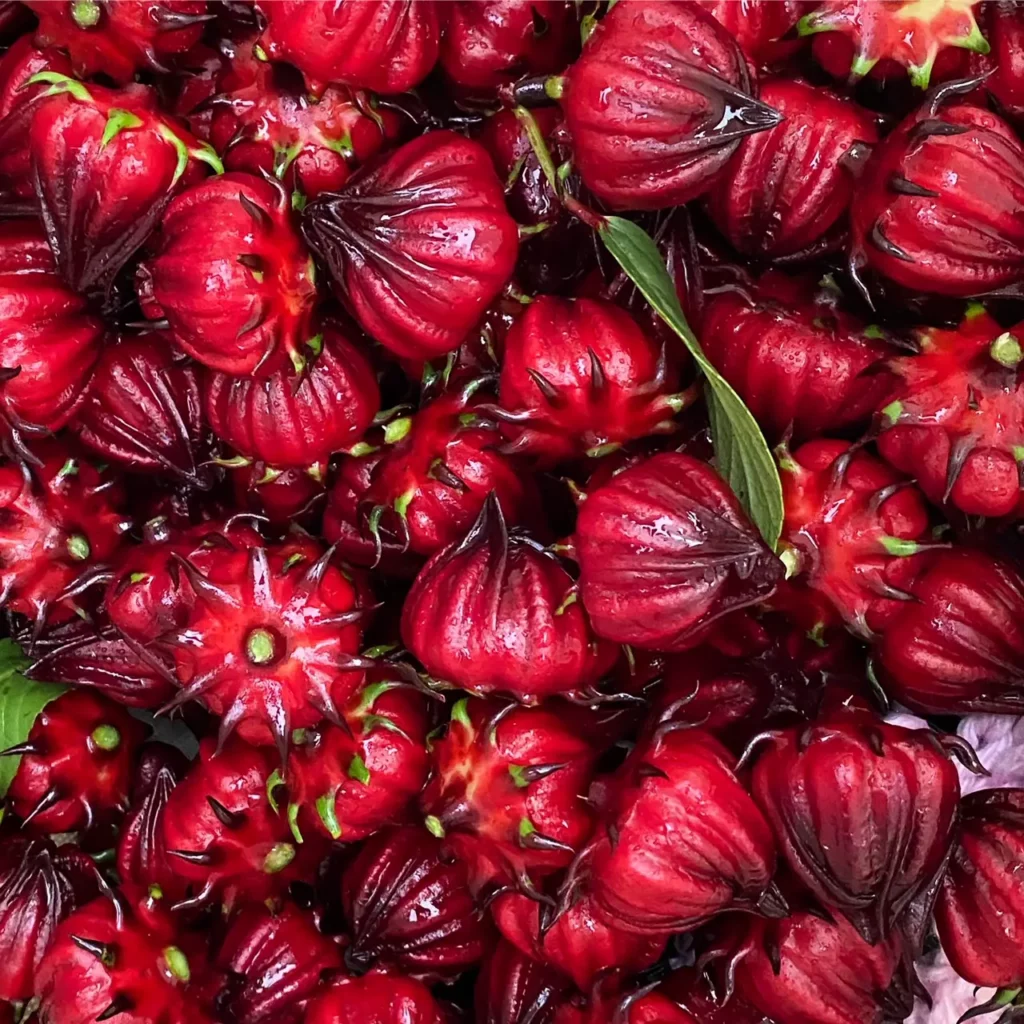
The calyxes can also be chopped fresh and made into jams. It tastes very similar to cranberry, with a remarkable acidity. You can also eat the young leaves in soups (look for Nigerian soups).
Once the calyxes are dry or dehydrated, grind them in a mortar. The powder works for infusions or to tint meringues and creams.
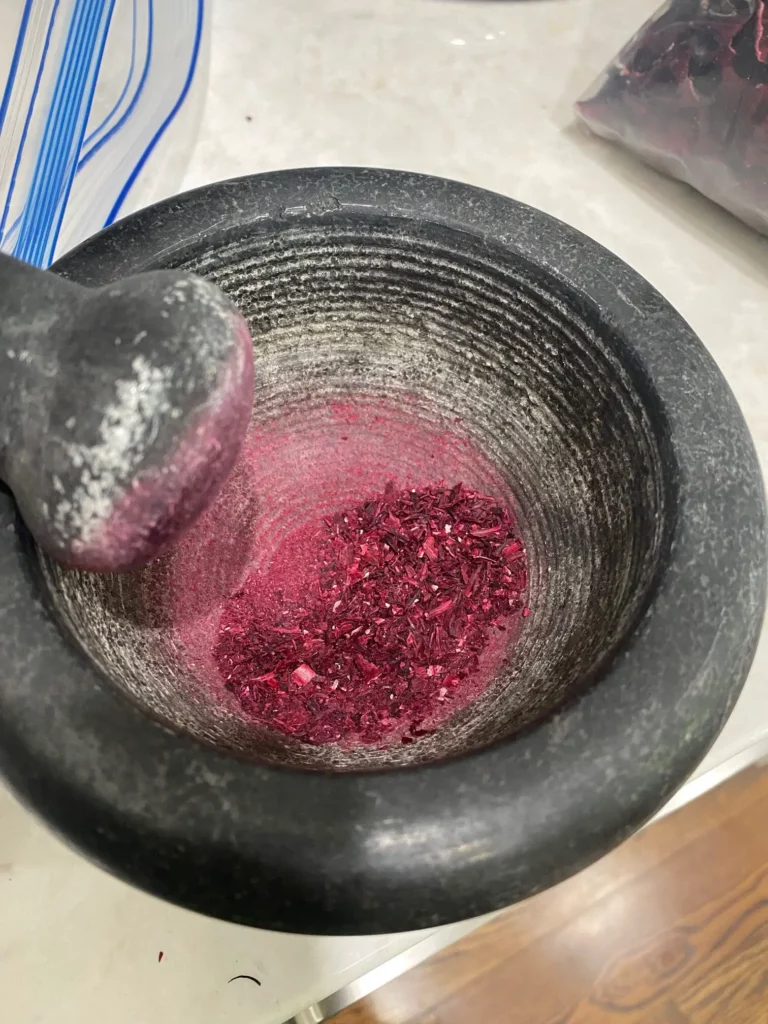
For the tea, place a handful of dry Jamaica in the water just before it comes to a boil and boils for 2 minutes. Strain and serve. Add sugar to taste.
I prefer to make syrup and add iced water for my Agua Fresca de Jamaica or Hibiscus Iced Tea.
Recently dry Jamaica is also used in savory vegan preparations, replacing meats. I've seen Hibiscus tacos, for example.
If you want to read about how to choose a site or basic gardening in Houston, read here.

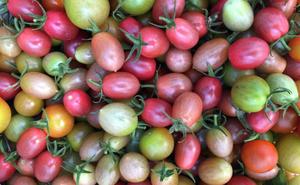
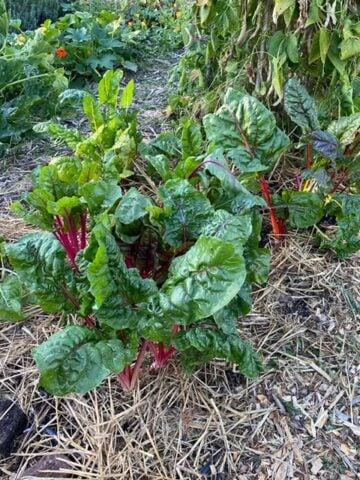
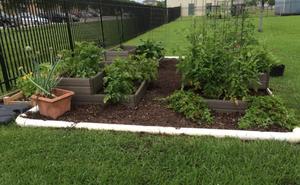
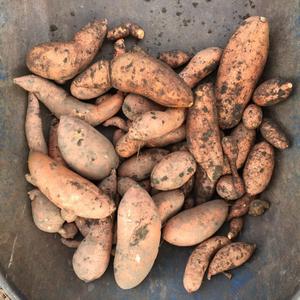
Leave a Reply